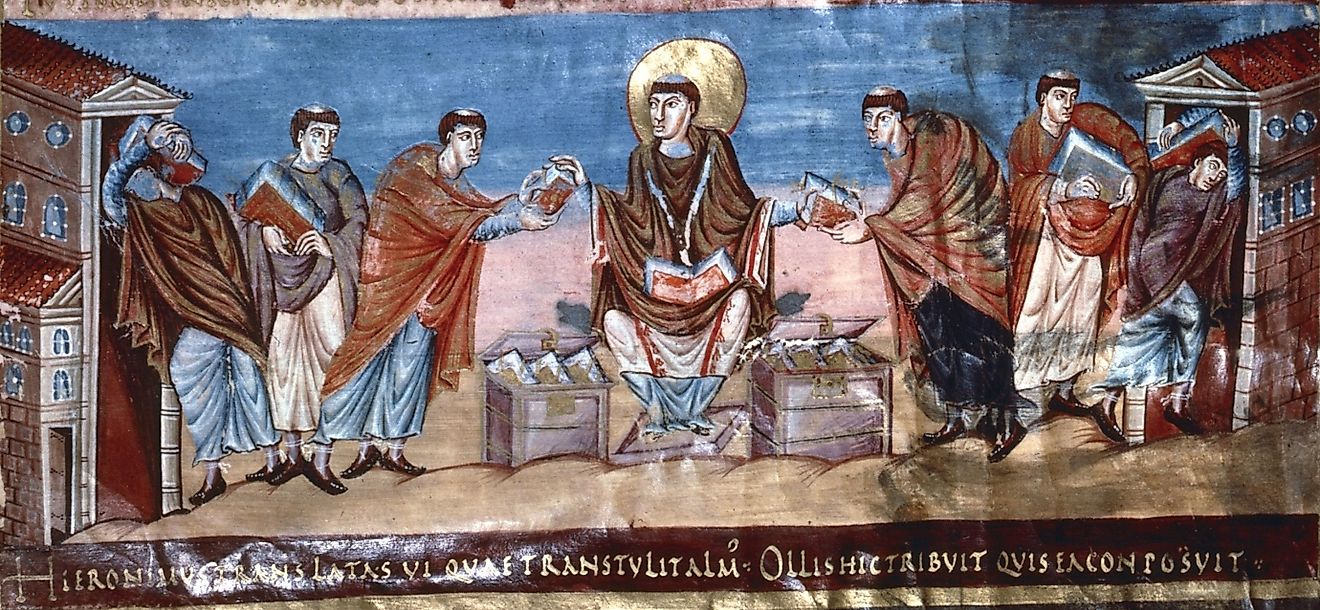Charles the Bald - World Leaders in History

5. Early Life
King Louis (the Pious), son of Charlemagne, had already had three sons by the time his youngest, Charles was born to his second wife, Judith. Pippin, Lothair and Louis the German were Charles’ half brothers, and already nearing adulthood when Charles was born on June 13th, 823, in Frankfurt. His arrival immediately began to cause tensions within the family, as King Louis needed to redistribute the empire to accommodate his youngest son. At the time of King Louis’ death, the Carolingian civil war broke out between separate factions, respectively led by the remaining brothers. Charles the Bald sided with Louis the German, and together they forced Lothair to agree to the Treaty of Verdun. This divided the Carolingian Empire amongst the brothers into three kingdoms.
4. Rise to Power
The Treaty of Verdun divided the Carolingian empire into three distinct areas. Louis was to take ownership of the easternmost area, and Lothair the central section, leaving the eastern component of the empire to Charles. Charles faced some difficulty maintaining control over his land, and his territory was subject to near-constant raids from the Vikings to the north. Charles had to send bribes in the form of tribute to the Norsemen in order for them to stop their attacks so that he could focus on Louis the German’s own invasion attempts in 858. Some years later, he was able to acquire Western Lorraine upon the signing of the Treaty of Meersen in 870. Once Lothair's son, Louis II, died, Pope John VIII crowned Charles as Emperor over much of the realm of the Carolingian Empire. Upon the death of Louis the German in 876, Charles attempted to take his land. This invasion was unsuccessful as Louis’ son, Louis III, was able to defeat him.
3. Contributions
The actions of Charles the Bald and his half brothers in Europe can still be felt today. In fact, the three divisions of the Carolingian Empire further broke down and became segmented, somewhat resembling the countries and their boundaries that we know in Europe today. France grew out of West Francia and Germany from East Francia. The central component of the three regions, formally Charles’s brother Lothair’s kingdom, became continually fractured over time, as no leader was able to hold it together as one cohesive unit. Thus, the region became several separate states that make up part of Europe today, stretching over the Alps and into the Benelux region, covering parts of modern Italy, Switzerland, Croatia, Monaco, Belgium and others, from the Mediterranean to the North Sea.
2. Challenges
Growing up as the youngest of four brothers and having to fight for every bit of land he could call his own proved difficult for Charles. He was able to overcome these challenges by forging temporary alliances with his older brothers. The most notable would be with his brother Louis the German. This co-fraternal, and seemingly cooperative, alliance was broken shortly thereafter, and constant infighting between the blood relatives continued even throughout and into the next generation, when Louis the German’s son defeated Charles at Andernach on the 8th of October, 876.
1. Death and Legacy
Following his decisive defeat at Andernach at the hands of his nephew, Charles became sick. His condition deteriorated as he made his journey back to Gaul. His death is recorded to have taken place while crossing the Mont Cenis at Brides-les-Bains, very close to his place of birth, on the 6th of October, 877. His body was buried in the Abbey of Nantua. He may, however, have been moved to the Basilique Saint-Denis in later years, as this is where he desired to be laid to rest. Charles’s eldest son, Louis the Stammerer, was his heir and successor to the throne of West Francia.











